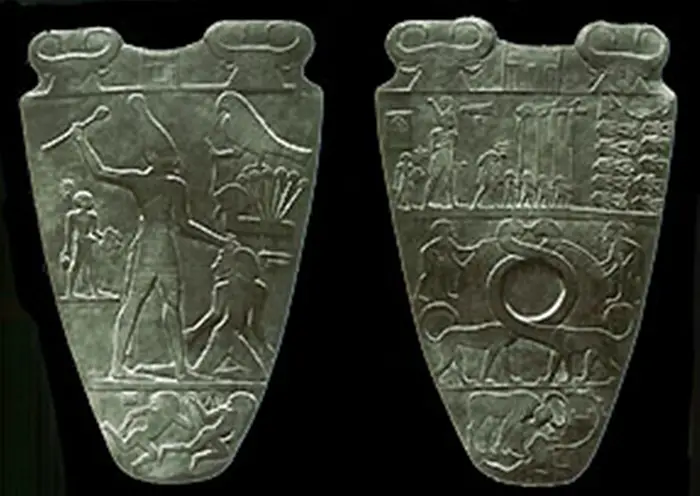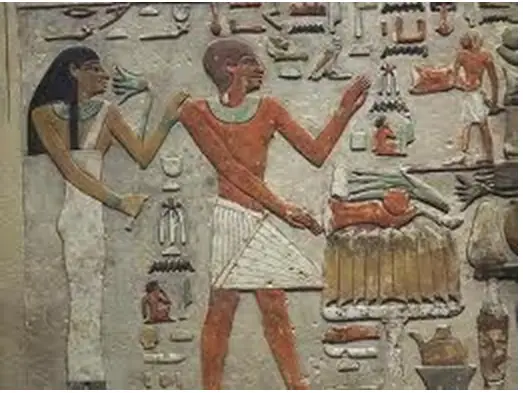Egyptian Art
Ancient Egypt Art History
Ancient Egypt’s art history is rich and diverse, with a focus on religious and funerary themes.
The use of hieroglyphs and stylized figures in their art served as a way to communicate with the gods and to ensure the afterlife of the deceased.
From the earliest times, Egyptian art was developed in the service of the king. Ancient Egyptian art was first created to show that the king was a god.
The art-forms were first of all worked out by the master craftsmen in the Pharaoh’s court.
Their ideas and fashions were then followed carefully by lesser craftsmen who worked for ordinary Egyptians.
Egyptian art history
Thousands of years ago, in the land of Egypt, a civilization thrived and created some of the most magnificent art in history. But this art was more than just beauty – it was a symbol of power and religion, showcasing the pharaohs and gods that ruled their world.
From the grandeur of the pyramids and temples to the intricate details of jewellery and pottery, Egyptian art had a distinctive style. People were depicted in profile, with one eye, and in a specific pose.
These rules were followed carefully, creating uniformity throughout the artwork. And this art was so captivating that it even inspired other cultures to imitate it.
Egyptian art was more than just a product of its time – it was a legacy that has been preserved and admired for centuries. It’s a testament to the creativity and ingenuity of a civilization that has left an indelible mark on history.
And as we continue to study and appreciate this art, we are reminded of the power and majesty that once ruled the land of Egypt.
Pictures
The earliest work of art that we can give a date to is the Palette of Narmer, who was the first king of the first dynasty, about 3000 B.C. (5000 years ago).
This palette shows Narmer’s victories. It is carved with ‘reliefs’ which means that the artist has carved away the slate background to make the pictures stand out.

This early picture does not show any ‘perspective’.
That is, it does not show any depth or space (think of a modern painting of a country lane, showing the lane stretching away into the distance – that is perspective).
For the next 3000 years, Egyptian pictures showed little change from this early example.
Pictures were either carved in relief on stone or slate, or they were painted on walls. In both cases, the pictures are ‘two dimensional’ showing no depth.
The craftsmen from the 4th dynasty onwards produced wonderful wall paintings, of people’s daily life and the birds and plants that were around them.
These paintings are found on the walls of the tombs where the dead were buried. It was hoped that in life after death, the pleasant life shown in the paintings would continue for the dead person.

The upper picture here shows people trapping birds and the lower picture shows people ploughing.
Below is a brightly coloured picture of Geese.
Both these paintings were painted on the walls of Egyptian tombs of the Old Kingdom more than 4500 years ago.

In the Middle Kingdom, the same art forms continued: we can see from the picture below a number of features that are common in Egyptian pictures throughout the Old, Middle and New Kingdoms.

The bodies of the figures are facing us, but their heads are in profile (turned sideways).
The body of the Pharaoh, if shown, is always very stiff and formal, as in the Narmer palette, but the bodies of ordinary people are more relaxed and life-like, as in the picture of people ploughing.
The Pharaoh is always larger than any other figures in the picture.
All the pictures are two-dimensional, without any depth.
Sculpture
From the 3rd Dynasty onwards, Egyptian art began to produce sculptures as well as carvings and paintings. The most exciting time for this art was the 4th Dynasty when the Pyramids were built.
The picture below shows King Mycerinus between two goddesses.
The statue was made around 2600 B.C. (4600 years ago).
Later Egyptian sculpture followed this style for 2000 years. The statues are life-like, always facing forwards (unlike the paintings), and are made from hard stone which has lasted well.

Egyptian sculpture
Shows human faces as they really were.
Has the figures facing directly forwards.
The figures are standing or sitting upright and are very stiff and formal.
Applied Art
During the New Kingdom, wealth flowed into Egypt and the master craftsmen used precious metals such as gold and precious stones to produce jewellery and to decorate the mummy cases in which the mummified bodies of pharaohs and rich officials were placed.
The best example of a highly decorated sarcophagus(mummy case) that has survived is that of the Pharaoh Tutankhamun. The sarcophagus is made of solid gold and beautifully decorated by master craftsmen.

Useful Websites
- The British Museum – One of the best websites on the website
- Memphis University – The Ancient Egyptian Collection



